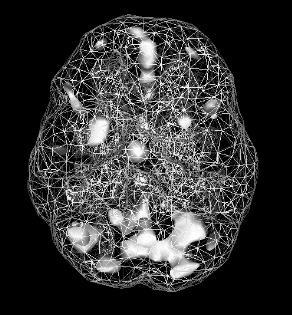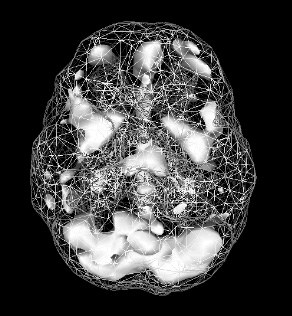CHAPTER 11: M IS FOR MIND STORMS: SOOTHING THE ABNORMAL ELECTRICAL ACTIVITY THAT DRIVES MOOD SWINGS, ANXIETY, AND AGGRESSION
There was always one instant just before the epileptic fit . . . when suddenly in the midst of sadness, spiritual darkness and oppression, his brain seemed momentarily to catch fire, and in an extraordinary rush, all his vital forces were at their highest tension. The sense of life, the consciousness of self, were multiplied almost ten times at these moments which lasted no longer than a flash of lightning. His mind and his heart were flooded with extraordinary light; all his uneasiness, all his doubts, all his anxieties were relieved at once; they were all resolved in a lofty calm, full of serene, harmonious joy and hope, full of reason and ultimate meaning. But these moments, these flashes, were only a premonition of that final second (it was never more than a second) with which the fit began.
FYODOR DOSTOEVSKY (WHO SUFFERED WITH TEMPORAL LOBE EPILEPSY), THE IDIOT
I walked into my California clinic one day, and my office manager quickly pulled me aside and said, “Daniel, you have to see Tommy.” I let her know that I already had 14 people on my schedule. But she just dismissed me and said, “Daniel, you need to see Tommy. He’s really cute. He’s nine years old. He’s from Orlando, Florida. And he’s read your book Change Your Brain, Change Your Life.” Okay, a nine-year-old who read my book? Now I was paying attention.
I found Tommy in one of the other doctor’s offices, and when the young boy saw me, he yelled, “Hey, you’re Dr. Amen!” What he said next absolutely floored me. “Dr. Amen, I have a left temporal lobe problem.”
“Really?” I asked. “How do you know?”
He said he had taken the checklist in the book. “I have a really bad temper, and you write that people who have bad tempers often have temporal lobe problems.” He was right. Then he added, “And I used to see ghosts.” I asked him what he meant, and he said, “I used to see these green things float in front of my eyes. I thought they were ghosts, and they would scare me until I read your book and realized they were just illusions that people with temporal lobe problems get.” Then he looked at me with his big, beautiful blue eyes and said, “Last year, to get rid of the bad thoughts in my head, I tried to kill myself.”
The thought of this sweet young boy trying to kill himself because he thought he was seeing monsters broke my heart. But he was right. People who have temporal lobe problems do tend to have dark, evil, awful thoughts; I think of them as mind storms. And sadly, they often try to kill themselves. Tommy completely blew me away. I asked him if he had seen his scan yet, and he said no.
“Want to?” I asked.
“Oh, yeah!” he replied.
So I took him and his parents to the imaging center, and when I showed him his scan, it was very clear that he had a left temporal lobe abnormality.
Tommy’s Surface SPECT Scan
TOMMY’S SURFACE SPECT SCAN
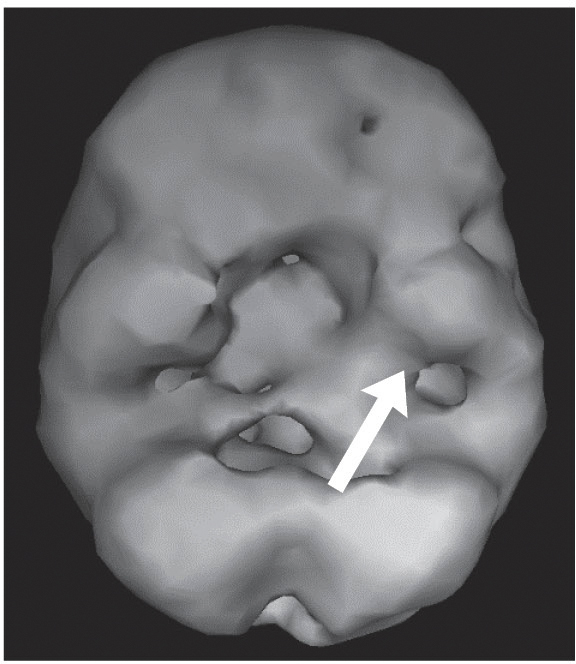
Decreased activity left temporal lobe
“See, I was right,” he said. A nine-year-old had accurately predicted what his own brain scan would look like. When he was able to confirm that his mind storms were actually just temporal lobe problems, it gave him hope that we could help him get rid of those bad illusions. That’s where the power is in this —you can figure out your brain health/mental health issues even without being scanned. In my mind, that’s so exciting and powerful, leading to what’s most important —you getting well.
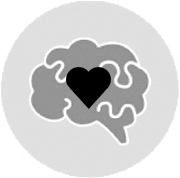
TIM AND WENDY
Since 51 percent of the population will have a mental health issue at some point in life,[438] I often say during lectures that “normal” is a myth. It is more normal to have an issue than to not have an issue. “Normal” is a setting on your dryer or a city in Illinois. I once gave a lecture in Normal, Illinois. It was fun to go to the Normal grocery store, be interviewed on the Normal radio station, and finally meet Normal people. Since I’m from California, that was a treat. Yet I found the Normal people there actually had the same problems I had seen everywhere else. At the lecture, I met a psychologist, Wendy, who told me her husband, Tim, was really struggling. He had been arrested for domestic violence, and Wendy was on the verge of divorcing him, which was breaking her heart. She loved him and knew something was the matter with his brain, even though her own therapist said he had a personality disorder and she should leave as soon as possible. So Wendy and Tim flew to California to see me.
Tim was 54 years old and told me he struggled with memory problems, depression, and irritability. He also frequently saw shadows out of the corner of his eyes and heard an annoying buzzing sound, for which his doctor could not find a cause. His temper flare-ups just seemed to come out of the blue. “The littlest things set me off. Then I feel terribly guilty,” he said, crying. “If she leaves me, I don’t know what I will do, even though I understand why everyone tells her she should go. Please help me stop these rage attacks.”
When Tim was six years old, he fell out of a second-story window. He didn’t remember if he lost consciousness, and his parents were no longer alive to ask. As a child, he had learning problems and had gone to the principal’s office a lot for fighting. He had tried antidepressant medications, psychotherapy, and couples counseling, but they didn’t help. His brain SPECT study showed significantly low activity in his prefrontal cortex (PFC) and left temporal lobe. Low PFC activity often is associated with poor forethought and impulse control. Abnormal activity in the temporal lobes, especially the left side, is associated with mood instability, irritability, learning and memory problems, illusions (such as seeing shadows and hearing buzzing), and rage for little to no reason. It can cause storms of activity in the brain that hijack the mind.
As a young psychiatrist, I was inspired by the story of the late Jack Dreyfus, the financier who founded the successful Dreyfus Fund. In his 1981 book, A Remarkable Medicine Has Been Overlooked, he told the story of how, despite his fame and fortune, he awakened in terror and fell into a deep depression that conventional treatments didn’t help. He sensed electricity in his body that intensified his feelings of fear, anger, and anxiety, and it reminded him of epileptics he had seen. He asked his doctor if he could try the anti-seizure medication phenytoin (Dilantin), and within a day of taking it, his symptoms of emotional distress began to dissipate. In his book, he wrote, “A few days later my need for psychotherapy was gone.”[439] Dreyfus went on to spend $60 million of his own money to study the usefulness of Dilantin for a variety of “mental health” conditions, such as anxiety, violence, and mood swings.
When I first learned about brain SPECT in 1991, one of its primary uses was in evaluating seizure disorders. When patients were having seizures, there was increased activity on SPECT; in between seizures, there was decreased activity. Neurosurgeons often used SPECT to know where to operate on patients with uncontrollable seizures. I thought of Jack’s story while working with Wendy and Tim.
On the anti-seizure medication lamotrigine (Lamictal) to stabilize Tim’s left temporal lobe, then a stimulant to activate his PFC, along with neurofeedback and our other BRIGHT MINDS strategies, Tim’s rage attacks stopped, his memory improved, and his relationship with Wendy became the best it had been in 20 years. Wendy later told me that our work together completely changed how she worked with her own clients.
Tim’s Surface SPECT Scan
TIM’S SURFACE SPECT SCAN
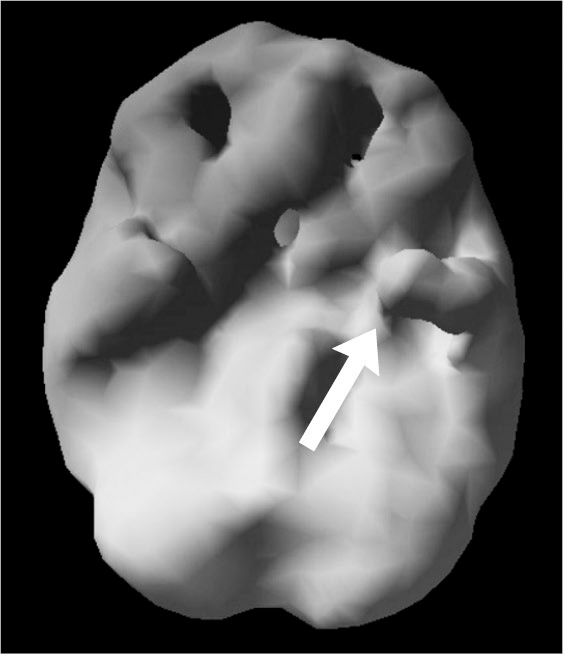
Decreased PFC and left temporal lobe activity (arrow)
THE WORLD’S MOST POWERFUL HYBRID ELECTROCHEMICAL ENGINE
Your brain is the world’s most powerful hybrid electrochemical engine. It uses electricity and neurotransmitters to help you think, feel, and act. Electricity (the flow of charged ions) is constantly moving throughout your body, causing your heart to beat and your muscles to contract. Yet nowhere is electricity better documented than in the roughly 100 billion biological wires (neurons) in your brain.
A neuron’s main job is to generate an electrical signal called an action potential, which occurs if it is sufficiently “excited” by other nerve cells. The action potential of a single neuron is like a tiny lightning bolt —this is part of the reason why neuroscientists talk about neurons “firing” when they’re active —and it may stimulate many other neurons. The stimulated neurons can then generate their own action potentials, which travel to and stimulate still more neurons, creating a coordinated network that performs a specific brain function.
Action potentials race down axons at about 60 miles per hour. The signals can travel this quickly because, as the human brain develops from childhood to adulthood, axons are wrapped and insulated by a special fatty substance called myelin that enhances transmission speeds. Axons that are not insulated by myelin, either by design or disease, transmit signals 10 times slower.
Action Potential
ACTION POTENTIAL
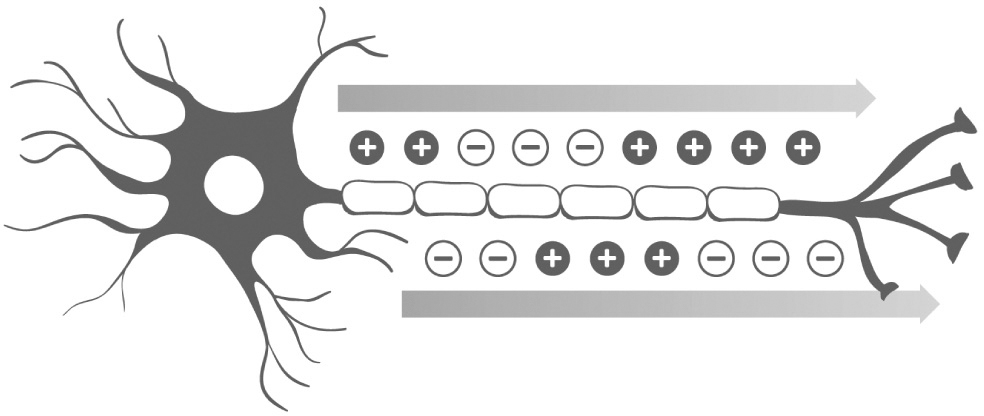
A neuron’s main job is to generate an electrical signal called an action potential, which occurs if it is sufficiently “excited” by other nerve cells.
HOW DISEASES IMPAIR BRAIN FUNCTION
Some diseases of the brain start by damaging the brain’s wiring or impairing the ability to create the right amount of electricity. In a sort of Goldilocks scenario, too much electricity or too little electricity can be a problem. It needs to be just right. Brain trouble can occur because of
- Fewer synapses in a network, which is common in depression or a lack of mental or physical exercise
- Fewer neurons in a network, which happens in Alzheimer’s disease
- Impaired generation of action potentials, which can happen if you have three or more alcoholic drinks at a time
- Damage to neurons that slow the speed of action potentials, common in head trauma or strokes
- Excessive electrical activity, seen in seizure disorders
Abnormal electrical activity not only can change the activity of the brain, but can also change the mind and cause mind storms that can be associated with temper outbursts, depression, suicidal thoughts, panic attacks, distractibility, and confusion. As far back as 1907,[440] Emil Kraepelin discussed interictal dysphoric disorder (IDD) —ictal refers to seizure states; interictal means between seizures. He observed depressive symptoms mixed with euphoric moods, irritability, fear, and anxiety as well as with intense fatigue, pain, and insomnia in patients with untreated epilepsy.
Abnormal electrical activity can not only change the activity of the brain, but it can also change your mind and cause mind storms that can be associated with temper outbursts, depression, suicidal thoughts, panic attacks, distractibility, and confusion.
Mind Storms Risk Factors
(and the Four Circles They Represent)
The tactics of an evil ruler to promote mind storms are simple.
THE EVIL RULER WOULD . . .
Discourage the population from getting brain scans or other diagnostic tests to see if their psychiatric symptoms are being caused by abnormal electrical activity.
THE BENEVOLENT RULER WOULD . . .
Encourage people to get brain scans or other diagnostic tests to determine if abnormal electrical activity may be at the root of symptoms of mental illness.
PRESCRIPTIONS FOR REDUCING YOUR MIND STORMS RISK FACTORS
(AND THE FOUR CIRCLES THEY REPRESENT)
The Strategies
BRIGHT MINDS: MIND STORMS
STEPS TO CREATE MENTAL ILLNESS . . . AND MAKE MY NIECES, ALIZÉ AND AMELIE, SUFFER
- 1. Don’t care about how your brain cells fire with one another.
- 2. Engage in habits that increase your risk for mind storms.
- Live a stress-filled life.
- Skimp on sleep.
- Abuse drugs and alcohol.
- Consume a diet high in sugar and skip meals.
- Eat foods containing Red Dye #40, MSG, and other food additives
- Don’t address premenstrual syndrome (PMS) or chronic pain.
- Play video games for hours on end.
- Use fluorescent lights
- 3. Avoid the strategies that decrease your risk for mind storms.
STEPS TO END MENTAL ILLNESS . . . AND KEEP MY NIECES, ALIZÉ AND AMELIE, HEALTHY
- 1. Care about the electrical activity in your brain.
- 2. Avoid anything that increases your risk for mind storms.
- 3. Engage regularly in healthy habits that decrease the risk for mind storms and treat them when necessary.
- Practice stress-management techniques.
- Get seven to eight hours of sleep each night.
- Eliminate drugs and limit alcohol.
- Consider a ketogenic diet.
- Seek treatment for PMS or chronic pain conditions.
- Limit video games.
- Consider neurofeedback and nutraceuticals to calm overfiring in the brain.
- Take antiseizure medication, if necessary.
Pick One BRIGHT MINDS Mind Storms Tiny Habit to Start Today
- When I feel stressed, I will use stress relief techniques like deep breathing and meditation to calm these feelings.
- When I go shopping, I will avoid foods with a lot of sugar as well as those with dyes and preservatives.
- When I play video games, I will limit it to one hour per day.
- When it gets close to bedtime, I will follow a sleep routine to help me fall asleep faster.
- When I eat, I will consider adopting a ketogenic diet.




